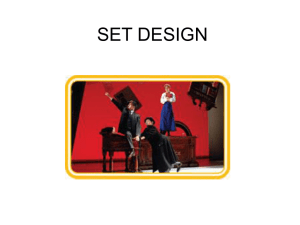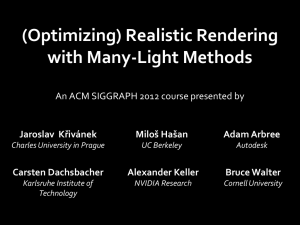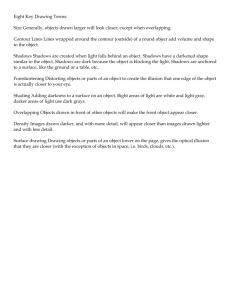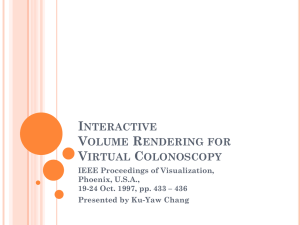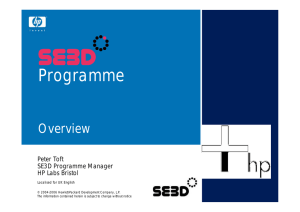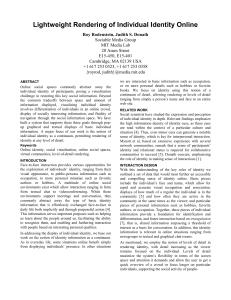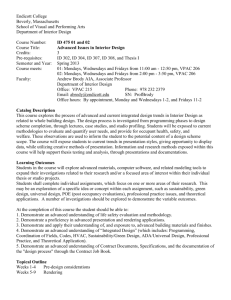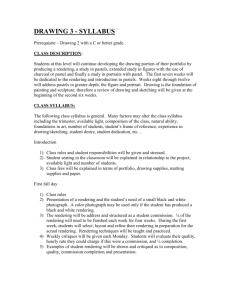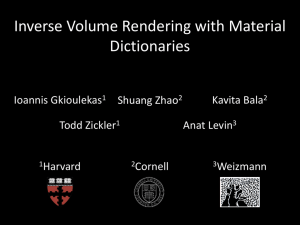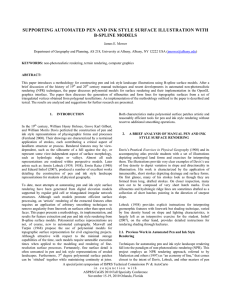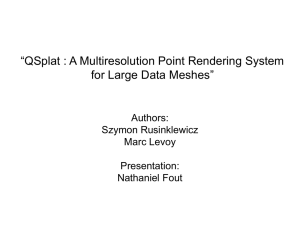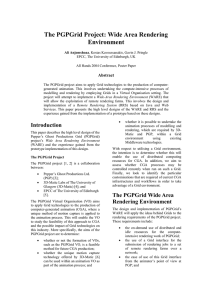Name:………………………………………………… Attempt 1
advertisement
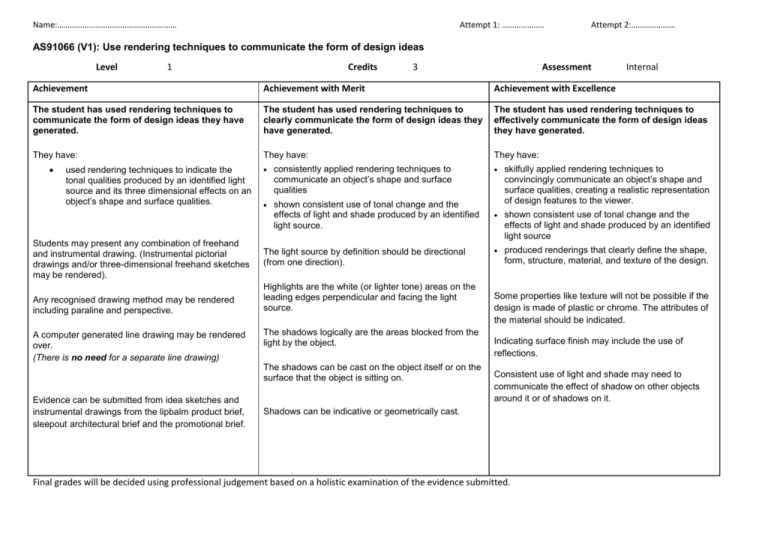
Name:………………………………………………… Attempt 1: ……………….. Attempt 2:………………… AS91066 (V1): Use rendering techniques to communicate the form of design ideas Level 1 Credits 3 Assessment Internal Achievement Achievement with Merit Achievement with Excellence The student has used rendering techniques to communicate the form of design ideas they have generated. The student has used rendering techniques to clearly communicate the form of design ideas they have generated. The student has used rendering techniques to effectively communicate the form of design ideas they have generated. They have: They have: They have: consistently applied rendering techniques to communicate an object’s shape and surface qualities shown consistent use of tonal change and the effects of light and shade produced by an identified light source. skilfully applied rendering techniques to convincingly communicate an object’s shape and surface qualities, creating a realistic representation of design features to the viewer. shown consistent use of tonal change and the effects of light and shade produced by an identified light source produced renderings that clearly define the shape, form, structure, material, and texture of the design. used rendering techniques to indicate the tonal qualities produced by an identified light source and its three dimensional effects on an object’s shape and surface qualities. Students may present any combination of freehand and instrumental drawing. (Instrumental pictorial drawings and/or three-dimensional freehand sketches may be rendered). Any recognised drawing method may be rendered including paraline and perspective. A computer generated line drawing may be rendered over. (There is no need for a separate line drawing) The light source by definition should be directional (from one direction). Highlights are the white (or lighter tone) areas on the leading edges perpendicular and facing the light source. The shadows logically are the areas blocked from the light by the object. The shadows can be cast on the object itself or on the surface that the object is sitting on. Evidence can be submitted from idea sketches and instrumental drawings from the lipbalm product brief, sleepout architectural brief and the promotional brief. Some properties like texture will not be possible if the design is made of plastic or chrome. The attributes of the material should be indicated. Indicating surface finish may include the use of reflections. Consistent use of light and shade may need to communicate the effect of shadow on other objects around it or of shadows on it. Shadows can be indicative or geometrically cast. Final grades will be decided using professional judgement based on a holistic examination of the evidence submitted.


